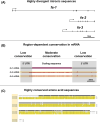Problems with Paralogs: The Promise and Challenges of Gene Duplicates in Evo-Devo Research
- PMID: 38565319
- PMCID: PMC11406157
- DOI: 10.1093/icb/icae009
Problems with Paralogs: The Promise and Challenges of Gene Duplicates in Evo-Devo Research
Abstract
Gene duplicates, or paralogs, serve as a major source of new genetic material and comprise seeds for evolutionary innovation. While originally thought to be quickly lost or nonfunctionalized following duplication, now a vast number of paralogs are known to be retained in a functional state. Daughter paralogs can provide robustness through redundancy, specialize via sub-functionalization, or neo-functionalize to play new roles. Indeed, the duplication and divergence of developmental genes have played a monumental role in the evolution of animal forms (e.g., Hox genes). Still, despite their prevalence and evolutionary importance, the precise detection of gene duplicates in newly sequenced genomes remains technically challenging and often overlooked. This presents an especially pertinent problem for evolutionary developmental biology, where hypothesis testing requires accurate detection of changes in gene expression and function, often in nontraditional model species. Frequently, these analyses rely on molecular reagents designed within coding sequences that may be highly similar in recently duplicated paralogs, leading to cross-reactivity and spurious results. Thus, care is needed to avoid erroneously assigning diverged functions of paralogs to a single gene, and potentially misinterpreting evolutionary history. This perspective aims to overview the prevalence and importance of paralogs and to shed light on the difficulty of their detection and analysis while offering potential solutions.
© The Author(s) 2024. Published by Oxford University Press on behalf of the Society for Integrative and Comparative Biology.
Figures

Similar articles
-
Detecting functional divergence after gene duplication through evolutionary changes in posttranslational regulatory sequences.PLoS Comput Biol. 2014 Dec 4;10(12):e1003977. doi: 10.1371/journal.pcbi.1003977. eCollection 2014 Dec. PLoS Comput Biol. 2014. PMID: 25474245 Free PMC article.
-
Early evolutionary history and genomic features of gene duplicates in the human genome.BMC Genomics. 2015 Aug 20;16(1):621. doi: 10.1186/s12864-015-1827-3. BMC Genomics. 2015. PMID: 26290067 Free PMC article.
-
To the beat of a different drum: determinants implicated in the asymmetric sequence divergence of Caenorhabditis elegans paralogs.BMC Evol Biol. 2013 Mar 27;13:73. doi: 10.1186/1471-2148-13-73. BMC Evol Biol. 2013. PMID: 23530733 Free PMC article.
-
New genes from old: asymmetric divergence of gene duplicates and the evolution of development.Philos Trans R Soc Lond B Biol Sci. 2017 Feb 5;372(1713):20150480. doi: 10.1098/rstb.2015.0480. Philos Trans R Soc Lond B Biol Sci. 2017. PMID: 27994121 Free PMC article. Review.
-
Accessing the Phenotype Gap: Enabling Systematic Investigation of Paralog Functional Complexity with CRISPR.Dev Cell. 2017 Oct 9;43(1):6-9. doi: 10.1016/j.devcel.2017.09.020. Dev Cell. 2017. PMID: 29017030 Review.
Cited by
-
Insect Flight: State of the Field and Future Directions.Integr Comp Biol. 2024 Jul 9;64(2):533-55. doi: 10.1093/icb/icae106. Online ahead of print. Integr Comp Biol. 2024. PMID: 38982327 Free PMC article.
-
Analysis of duplication and possible sub-functionalization of wing gene network components in pea aphids.bioRxiv [Preprint]. 2025 May 5:2025.04.30.651519. doi: 10.1101/2025.04.30.651519. bioRxiv. 2025. PMID: 40654827 Free PMC article. Preprint.
References
-
- Asma H, Tieke E, Deem KD, Rahmat J, Dong T, Huang X, Tomoyasu Y, Halfon MS. 2024. Regulatory genome annotation of 33 insect species. bioRxiv. 10.1101/2024.01.23.576926. - DOI
-
- Bellen HJ, O'Kane CJ, Wilson C, Grossniklaus U, Pearson RK, Gehring WJ. 1989. P-element-mediated enhancer detection: a versatile method to study development in Drosophila. Genes Dev. 3:1288–300. - PubMed
-
- Bessa J, Carmona L, Casares F. 2009. Zinc-finger paralogues tsh and tio are functionally equivalent during imaginal development in Drosophila and maintain their expression levels through auto- and cross-negative feedback loops. Dev Dyn. 238:19–28. - PubMed
-
- Biffar L, Stollewerk A. 2014. Conservation and evolutionary modifications of neuroblast expression patterns in insects. Dev Biol. 388:103–16. - PubMed
Publication types
MeSH terms
Grants and funding
LinkOut - more resources
Full Text Sources

